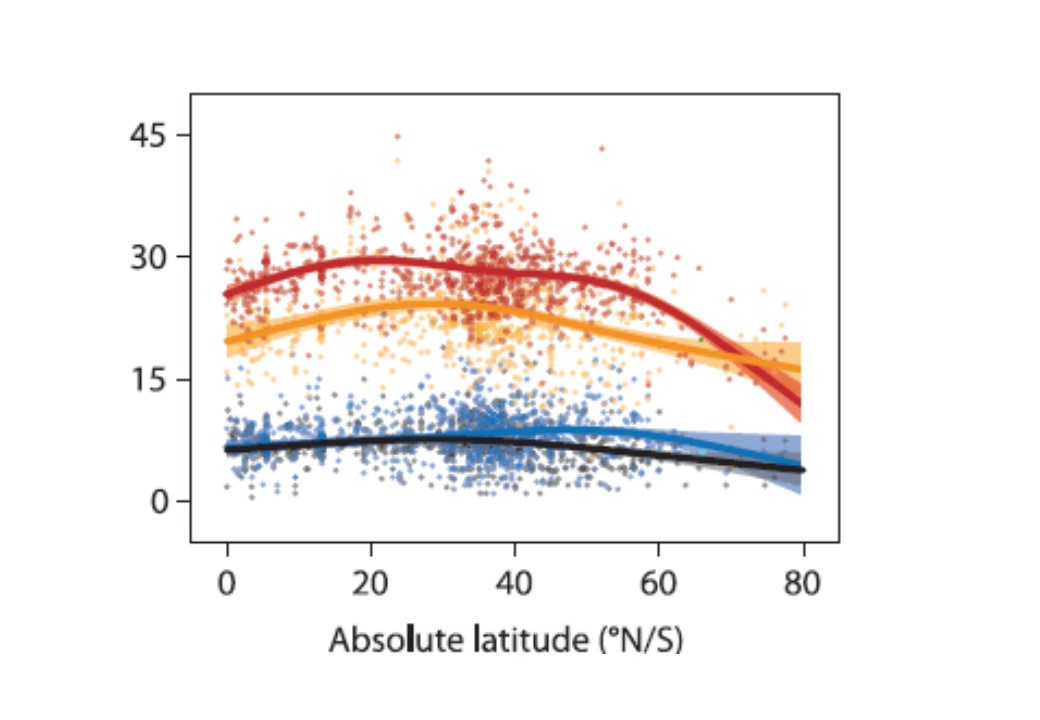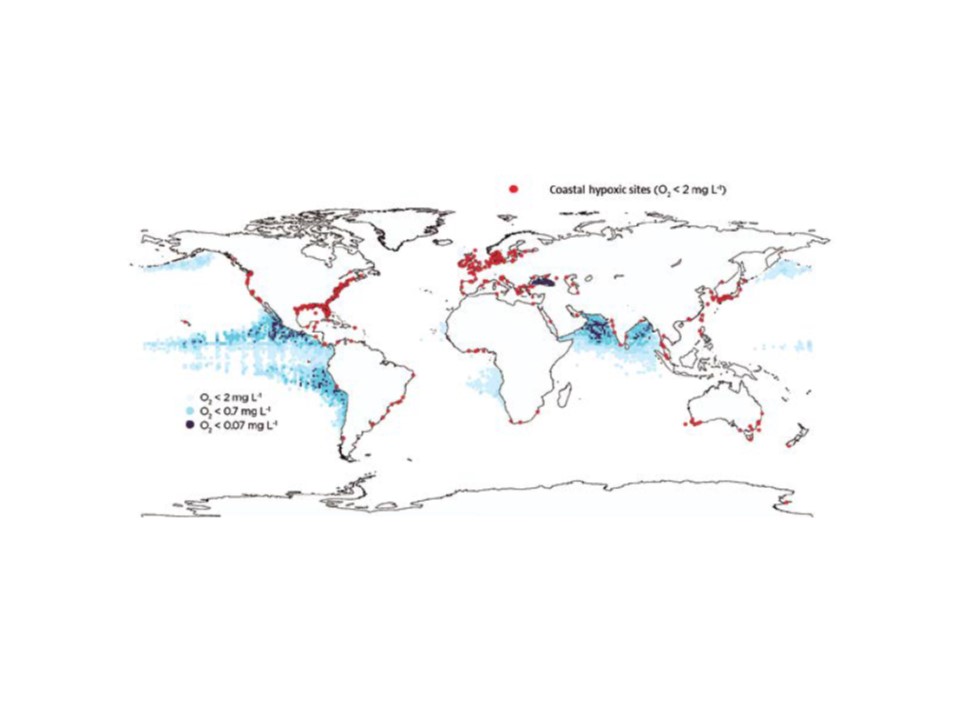Rising temperature affects fish more than previously thoughtLauantai 15.8.2020 klo 21.02 - Mikko Nikinmaa A recent study in Science (Dahlke et al., Science 369, 65–70, 3 July 2020) has evaluated, how fishes are affected by temperature increase associated with climate change. Fish are an increasingly important food source for humankind, so their success in warming waters is of primary importance for feeding human population. Consequently, the ability of fish to tolerate warming waters has been studied intensively. Earlier, it has been estimated that only 5 % of fish populations would be adversely affected by temperature increase predicted to occur by 2100. A lot of fisheries experts have sucked of relief about this, as overfishing  is a major threat presently, and it is thought that overfishing may decrease fish populations by half before 2050. In fact, it has been estimated that temperature increase would make population sizes of fishes larger in some areas. is a major threat presently, and it is thought that overfishing may decrease fish populations by half before 2050. In fact, it has been estimated that temperature increase would make population sizes of fishes larger in some areas.
The limitation of earlier estimations has been that the possibility that possible differences between temperature tolerances of age groups have not been estimated. This was done in the study by Dahlke et al. The results show that temperature tolerance of different age groups of fish is markedly different. The embryos (developing fish within egg cases) and spawning adults (blue and black lines in the figure) appear to have up to 20oC smaller tolerated temperature range than free-swimming larvae or non-reproducing adults (red and orange lines). The difference is greatest at mid latitudes, and decreases both (and especially) in the arctic and near equator. The reason for decreased temperature tolerance is probably due to mismatch between oxygen uptake and consumption. Oxygen uptake is limiting in the embryos enclosed within eggs, whereas the oxygen transport of free-living larvae and juvenile and non-reproducing adults becomes more effective. In spawning adults the oxygen consumption increases without improvement of oxygen transport. Physiological studies about the interaction between temperature, oxygen transport and consumption are needed in different life stages of fish to enable conclusive evaluation of what causes life stage-dependent variation of temperature tolerance. Regardless of the reason, it can be estimated that almost half of the fish stocks will be adversely affected by the temperature increase taking place, if the present international agreements are fulfilled. Together with the reduced stocks because of overfishing this can result in marked reduction in the fish food available to humankind. However, if we would do appropriate climate actions, one could prevent virtually all effects on fish populations. |
|
Kommentoi kirjoitusta. Avainsanat: climate change, fisheries, oxygen transport |
Deoxygenation of oceans is an increasing problem with effets on sealifePerjantai 13.12.2019 klo 18.01 - Mikko Nikinmaa The deoxygenation of the seas has increased markedly during the last 100 years. The areas with reduced oxygen have increased ten times between 1900 and 2000. There have always been oxygen-minimum zones in oceans, but their volume has increased markedly in the recent past, because of decreased ocean circulation and as a result of increased respiration following elevated temperature. In addition to the climate change-caused increase in hypoxic seas, the eutrophication of coastal areas because of human actions have caused pronounced low-oxygen areas especially in the traditionally industrialized western countries.
Spreading hypoxia is a major problem, as it decreases the populations of fish and other organisms. It further affects the species distributions with more preferred species decreasing and decreases biodiversity. The effects of reduced oxygen level as such are aggravated by an increased water temperature, i.e. climate change, because the oxygen consumption of fish and other poikilothermic animals increases with temperature increase. Simultaneously, the oxygen solubility in water decreases. Even this isn’t enough, but the oxygen binding by haemoglobin is reduced at a given oxygen tension with increased temperature. This reduces the capability of fish and other animals to survive in hypoxic conditions. This makes it more difficult of animals to tolerate increased temperature. So, climate change and the pollution of the seas together cause deoxygenation. The pollution further decreases the capability of microscopic algae to produce oxygen by photosynthesis. To combat the deoxygenation problem we need to stop eutrophication, and sea pollution by wastewater cleaning. Further, we need to combat climate change much more effectively than we have hitherto done. We need healthy seas to be able to feed the world, and the current increase in ocean deoxygenation is not doing that. The ocean deoxygenation problem is the subject of an IUCN report, downloadable from https://www.iucn.org/resources/publications. (p.s. I have been studying hypoxia responses in fish from1980). |
|
Kommentoi kirjoitusta. Avainsanat: climate change, aquatic pollution, hypoxia, oxygen transport |

